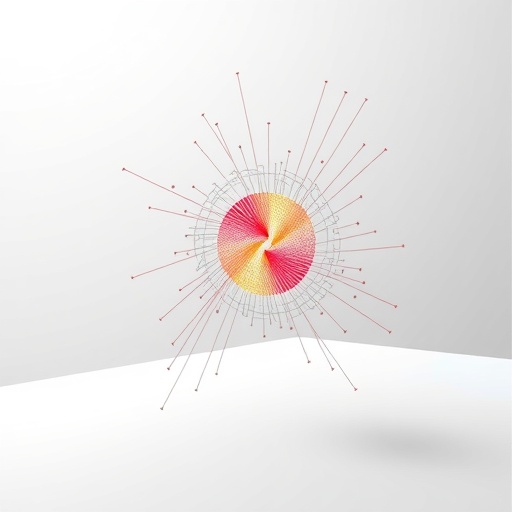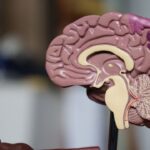
In the realm of modern physics, lattice gauge theories (LGTs) have long served as a fundamental framework for understanding complex interactions that govern the behavior of particles and fields in both condensed matter and high-energy contexts. These theories encode rich phenomena including confinement, a crucial mechanism that explains why quarks remain permanently bound within composite particles such as protons and neutrons. Despite decades of theoretical advancements, directly simulating the real-time dynamics of confinement and related phenomena, like string breaking, has remained an enduring challenge for physicists. Now, a groundbreaking experimental effort employing a programmable quantum simulator built from neutral atom arrays provides a revolutionary glimpse into these elusive processes, opening new avenues to explore the frontiers of quantum many-body physics and high-energy phenomena.
Confinement, an eminent hallmark of non-Abelian gauge theories like Quantum Chromodynamics (QCD), manifests when quark–antiquark pairs are pulled apart, causing a gluon field flux tube—or “string”—to form between them. The energy stored in this string grows linearly with the distance separating the charges, generating a confining potential that prevents free quarks from appearing in isolation. When the energy becomes sufficient to materialize a new quark–antiquark pair from the vacuum, the original gluon string “breaks,” resulting in two separate bound states. While this string breaking is predicted by theory and inferred through indirect experimental probes, capturing its dynamical evolution at a microscopic level poses severe computational challenges due to the exponential complexity inherent in strongly coupled gauge theories.
Recent advances in quantum simulation have ignited hope that synthetic quantum matter could directly emulate LGTs, thereby enabling physicists to observe complex gauge phenomena in controllable laboratory setups. The experimental platform harnessed by González-Cuadra and colleagues comprises large arrays of neutral atoms, individually trapped and manipulated via optical tweezers, exploiting the extraordinary properties of Rydberg states. These highly excited atomic states exhibit strong, long-range interactions, paving the way for encoding gauge symmetries and simulating the underlying dynamics of lattice gauge theories in a precise, programmable manner.
.adsslot_BJUbtj5P8R{ width:728px !important; height:90px !important; }
@media (max-width:1199px) { .adsslot_BJUbtj5P8R{ width:468px !important; height:60px !important; } }
@media (max-width:767px) { .adsslot_BJUbtj5P8R{ width:320px !important; height:50px !important; } }
ADVERTISEMENT
A key innovation of this study lies in the arrangement of atoms in a Kagome geometry, a two-dimensional lattice well-suited to mimic a (2 + 1)-dimensional LGT with dynamical matter fields. The geometry, combined with the Rydberg blockade effect—which restricts simultaneous excitation of nearby atoms—naturally enforces a local U(1) gauge symmetry, essential for reproducing the structure of gauge theories. This emergent symmetry ensures that the physical states of the system adhere to gauge constraints analogous to Gauss’s law, preserving the fidelity of the simulation to fundamental gauge principles.
By carefully tuning the parameters of the system, such as the detuning of atomic energy levels and the strength of Rydberg interactions, the experimental team engineered an effective linear confining potential between pairs of synthetic charges. This configurability allowed them to vary both the effective “mass” of the charges and the tension within the synthetic string connecting them, a level of control previously unattainable in either classical simulations or other quantum platforms. This tunability is pivotal for investigating different dynamical regimes of confinement and observing the nuanced processes responsible for string breaking.
The experiment began by adiabatically preparing the ground state of the neutral atom array in the presence of engineered defects that represent pairs of charges. Through precise measurements of atomic states across the lattice, the researchers identified distinct phases within the confined regime: one characterized by fluctuating strings maintaining the connection between charges, and another dominated by configurations where the string had broken, yielding isolated quasiparticles. This equilibrium probing revealed signatures of string breaking with unprecedented clarity, marking the first direct observation of this phenomenon in a synthetic quantum system.
Going beyond static equilibrium states, the research team leveraged local control over atomic detuning to perform quantum quenches—sudden changes in the system Hamiltonian—that launched the string states into non-equilibrium dynamical evolutions. By tracking the real-time response of the system, they observed complex string-breaking dynamics manifesting as many-body resonances. These resonances are collective phenomena emerging from intricate interplay of interactions in the strongly correlated synthetic matter, shedding light on the kinetics of flux tube fragmentation and particle production in gauge theories.
This study constitutes a remarkable milestone in quantum simulation, demonstrating that scalable neutral atom arrays can faithfully capture nontrivial lattice gauge dynamics in two spatial dimensions plus time, a significant leap beyond previous one-dimensional or analog experiments. The ability to emulate string breaking within a programmable architecture not only validates theoretical predictions but also provides a versatile platform for exploring a wide range of gauge phenomena that have hitherto been accessible only indirectly or through demanding numerical treatments.
Moreover, the interplay between long-range interactions inherent in Rydberg atoms and the engineered gauge constraints paves the way for simulating more complex gauge groups and higher-dimensional theories, potentially bridging the gap between condensed matter analogues and fundamental high-energy physics scenarios. The experimental techniques developed here could also facilitate the study of topological phases, quantum phase transitions, and exotic excitations like anyons within gauge-theoretic frameworks.
Looking ahead, this quantum simulator’s capabilities suggest promising applications for investigating out-of-equilibrium phenomena such as quark-gluon plasma formation, nonequilibrium thermalization in gauge systems, and real-time dynamics of early-universe particle processes. These areas have remained largely inaccessible to classical computation due to the exponential growth of the Hilbert space and the emergence of sign problems in traditional Monte Carlo approaches.
In addition to addressing fundamental scientific questions, the control demonstrated in this experiment through programmable detuning and tailored interactions could inspire novel quantum information protocols where gauge symmetries protect information coherence or enable error correction strategies rooted in local constraints. The fusion of quantum simulation with gauge theory concepts heralds an era where quantum devices become laboratories for uncovering the behavior of the quantum fields that underpin nature itself.
The convergence of atomic physics, quantum optics, and high-energy particle theory witnessed in this work underscores the multidisciplinary nature of modern science and the increasing role of quantum technologies as experimental platforms rivaling traditional particle accelerators. Finding direct experimental signatures of phenomena like string breaking not only enriches our understanding of QCD-inspired theories but also cements the foundation for future investigations into the quantum fabric of the universe.
As quantum simulators continue to scale in size and finesse, integrating more degrees of freedom and improved coherence times, the dream of simulating fully non-Abelian gauge theories, probing confinement-deconfinement transitions, and modeling complex hadronization processes draws ever closer. The work of González-Cuadra et al. offers a blueprint for these explorations, demonstrating that the age-old mysteries of confinement can now be interrogated using tunable, programmable synthetic quantum matter.
The experimental realization of string breaking in a (2 + 1)D lattice gauge model via Rydberg atom arrays heralds an exciting chapter in the quest to reconcile quantum simulation with the intricate tapestry of fundamental interactions. Its implications stretch across physics, promising to deepen our grasp of strongly correlated quantum fields and inspiring the next generation of quantum experiments that can transcend conventional limits of theoretical and computational approaches.
Subject of Research: Quantum simulation of lattice gauge theories; observation of string breaking in (2 + 1)D U(1) lattice gauge models using programmable neutral atom arrays.
Article Title: Observation of string breaking on a (2 + 1)D Rydberg quantum simulator.
Article References:
González-Cuadra, D., Hamdan, M., Zache, T.V. et al. Observation of string breaking on a (2 + 1)D Rydberg quantum simulator. Nature (2025). https://doi.org/10.1038/s41586-025-09051-6
Image Credits: AI Generated
Tags: 2D Rydberg simulatorexperimental insights into confinementhigh-energy particle interactionslattice gauge theoriesneutral atom arrays in physicsnon-Abelian gauge theoriesprogrammable quantum simulatorsQuantum Chromodynamics applicationsquantum many-body physicsquark confinement dynamicsreal-time dynamics of particle interactionsstring breaking phenomenon


